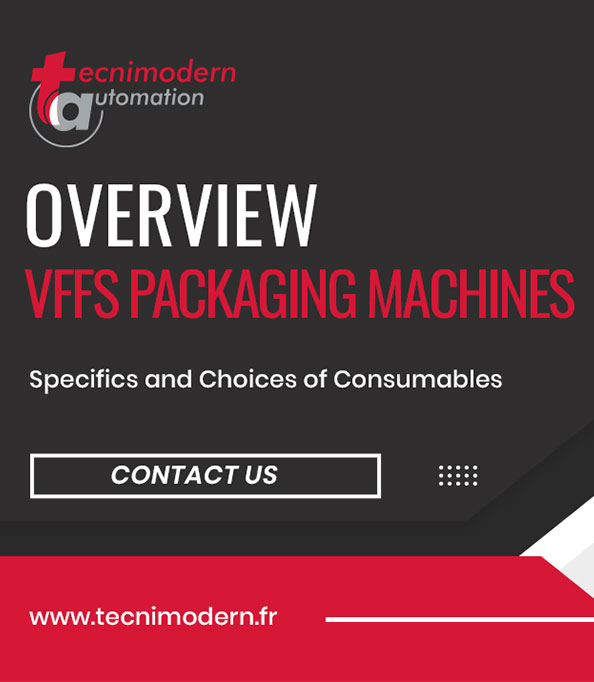Specifics and Choices of Consumables for VFFS Packaging Machines: A Comprehensive Perspective!
This week, we invite you to dive into the specifics, advantages, and disadvantages of consumables used in VFFS (Vertical Form Fill Seal) packaging machines. These machines are capable of packaging a wide range of products, from food items to industrial goods, including medical products, payment solutions, confectionery, and even automotive components.
To cater to the diverse requirements of these products, our 100% Made in France VFFS machines operate with three main categories of consumables:
Polyethylene (PE): Versatile and High Performance
Polyethylene is a widely used thermoplastic in various packaging sectors. It provides an excellent barrier against moisture, gases, and odors, preserving the freshness and quality of the packaged products. PE is known for its flexibility, strength, and ease of sealing, making it a popular choice for VFFS packaging applications. Furthermore, it is the most cost-effective consumable on the market.
Advantages of PE:
– Excellent barrier against moisture, gases, and odors.
– High flexibility and, consequently, better resistance to punctures.
– Ease of sealing.
– Inert, translucent, and creates a lower static charge.
– Prevents excessive light from entering the bag or film, aiding content protection.
– Attracts less dirt, dust, or other foreign organic elements.
– More resistant to cold temperatures and wear.
– Generally cheaper than PP.
Disadvantages of PE:
– Environmental impact associated with its production from petroleum resources.
– Recycling can be challenging for certain types of PE (although recycling initiatives are gradually increasing).
Polypropylene (PP): Versatile and Enhanced Barrier Properties
Polypropylene is another commonly used thermoplastic in VFFS flexible packaging. It offers good heat resistance, making it suitable for products requiring sterilization or pasteurization. PP is also impact-resistant and provides a good barrier against moisture. Its recyclability and dimensional stability make it an attractive choice.
Advantages of PP:
– Heat resistance, suitable for sterilization and pasteurization.
– Impact resistance.
– Good barrier against moisture.
– Recyclable and dimensionally stable.
– Transparent and translucent.
– More resistant to chemicals, high temperatures, and scratches.
– Rigid and tough plastic.
– Its rough surface may cause scratches.
– Compliant with FDA and USDA specifications.
– Difficult to break, but not very flexible.
Disadvantages of PP:
– Environmental impact associated with its production from petroleum resources.
– Less flexible and less easy to seal than PE in certain applications.
Paper: A More Environmentally Friendly Alternative
Paper is the new trending packaging material used in various sectors, including food and industrial products, offering great versatility. It is biodegradable and recyclable, making it a more environmentally friendly option compared to plastics. Additionally, paper provides good tear resistance and an attractive appearance for certain product types.
Advantages of paper:
– Biodegradable and recyclable.
– Appealing appearance for consumers.
Disadvantages of paper:
– Less effective as a barrier against moisture, grease, and gases.
– May lead to deterioration or deformation of the packaging in humid conditions.
It is essential to note that the choice of consumables depends on the specific requirements of each application, product type, and relevant regulations. Considerations such as sustainability, product protection, aesthetics, cost-effectiveness, and environmental compliance should guide material selection.
As stakeholders in the packaging industry, we must be mindful of the environmental impact of our choices. Pursuing innovative and sustainable solutions is an exciting challenge we face daily: all our machines are now capable of using paper as an alternative to plastic consumables!




